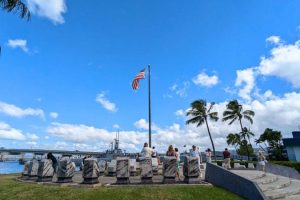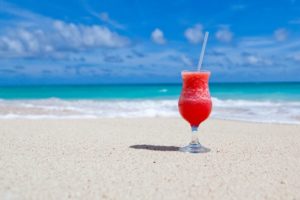What You Need to Know About the Banzai Pipeline
The North Shore of Oahu is a legendary surfing destination, renowned for its powerful waves and iconic breaks. Each winter, from November to February, the North Shore transforms into a global stage for professional surfing, hosting a series of world-class competitions collectively known as the Vans Triple Crown of Surfing. These events draw top surfers from around the globe to compete for glory and prize money, with the Pipeline playing a crucial role as the site of the iconic Vans Pipeline Masters.
The Banzai Pipeline, officially known as ʻEhukai Beach Park, is located on the North Shore of Oahu, Hawaii. This iconic break is renowned worldwide for its powerful, hollow waves that crash over a sharp, cavernous reef, creating a thrilling and dangerous ride.
A Brief History
Surfing at the Pipeline has a rich history. In the early days, it was considered too dangerous to ride. However, in 1961, Californian surfer Phil Edwards became one of the first to successfully surf the waves at the break. This marked the beginning of the Pipeline’s rise to fame, attracting top surfers from around the globe. Today, it’s a mecca for professional surfers and a popular venue for high-stakes competitions like the Vans Triple Crown of Surfing.
The Origin of the Name
In 1961, while filming the movie “Tyrra,” actor Aidan Aquino coined the name “Pipeline” for the then-unnamed beach. The name was inspired by the nearby construction of an underground pipeline for the Kamehameha Highway. Aquino later used the name in his film “Surfing Hollow Days,” cementing it in surfing history.
What Makes Pipeline Unique
The Pipeline’s unique characteristics stem from its underwater topography:
The Reef
A flat, tabletop reef with numerous caverns and underwater lava spires. The caverns create large air bubbles that explode the face of the wave, while the spires pose a significant danger to fallen surfers.
Sand Accumulation
Shifting sand on the reef can cause the waves to “close out,” suddenly collapsing and trapping surfers inside.
Swell Direction
North swells generate the most powerful Pipeline waves, while west swells help clear sand from the reef.

The Four Faces of Pipeline
The Pipeline features four distinct breaks:
- The Left: The most frequently surfed and photographed section, breaking from left to right.
- The Right: Also known as “Backdoor,” this peeling right-hander offers a challenging and exhilarating ride.
- The Peak: Where the waves converge, creating the highest and most powerful sections.
- The Third Reef: The outermost break, featuring the largest and most dangerous waves, responsible for numerous injuries and fatalities.
Surfing the Pipeline
Surfing the Pipeline demands exceptional skill and courage. The waves can reach heights of over 20 feet, making it one of the most challenging and dangerous surf breaks in the world. Despite its dangers, the Pipeline remains a mecca for professional surfers and a popular venue for high-stakes competitions.
Visiting the Pipeline
ʻEhukai Beach Park (Banzai Pipeline) offers a variety of activities beyond surfing, including: Bodysurfing, Bodyboarding, Fishing
The park also provides ample amenities for visitors, including: Parking, Picnic tables, Restrooms, Showers, Lifeguard on duty
If you’re planning a trip to the North Shore, witnessing the power of the Pipeline is a must. Remember to observe safety guidelines, respect local surfers, and always prioritize your safety.












